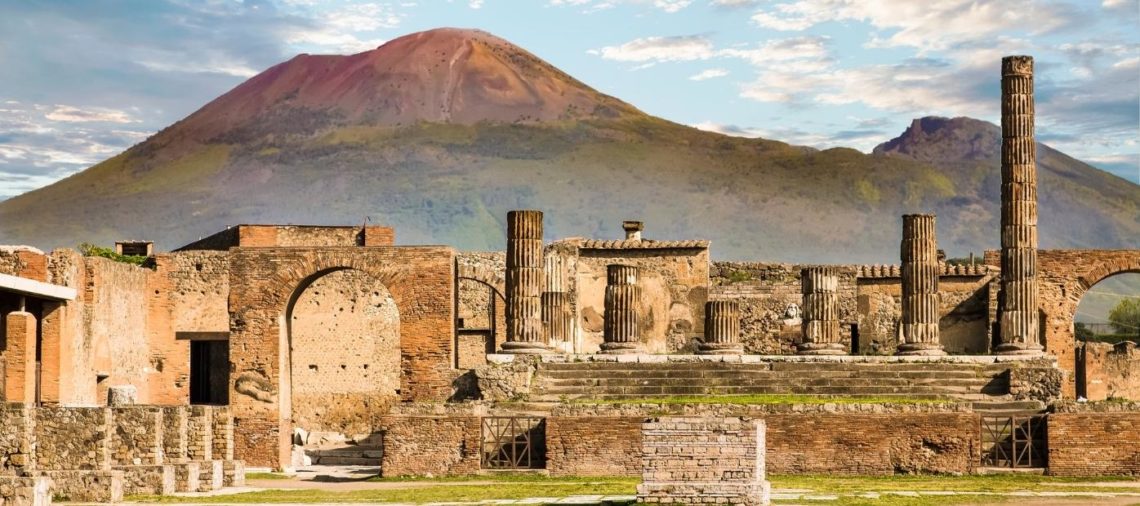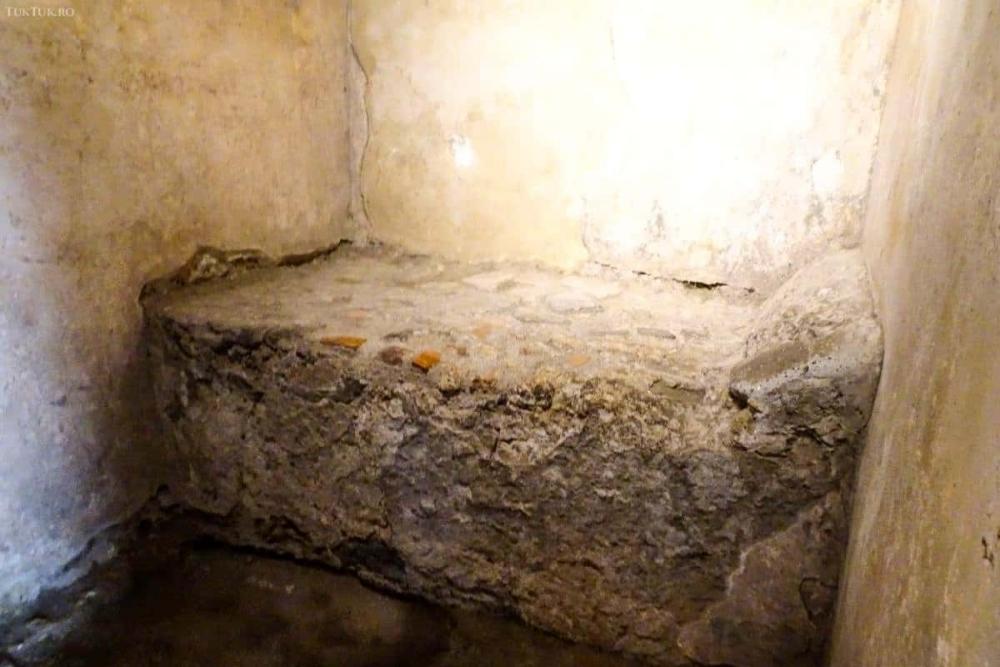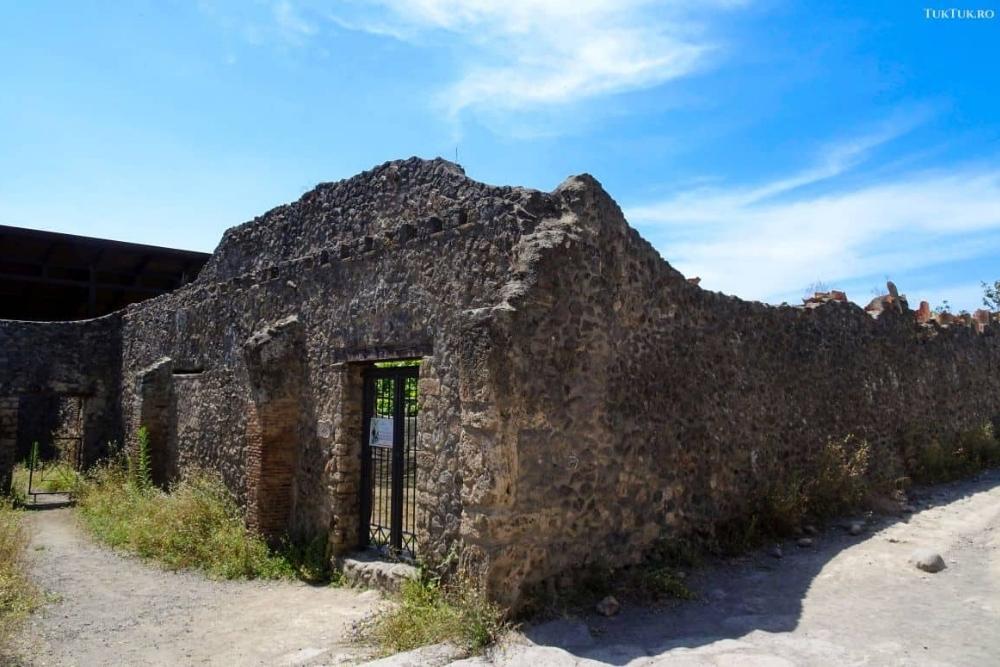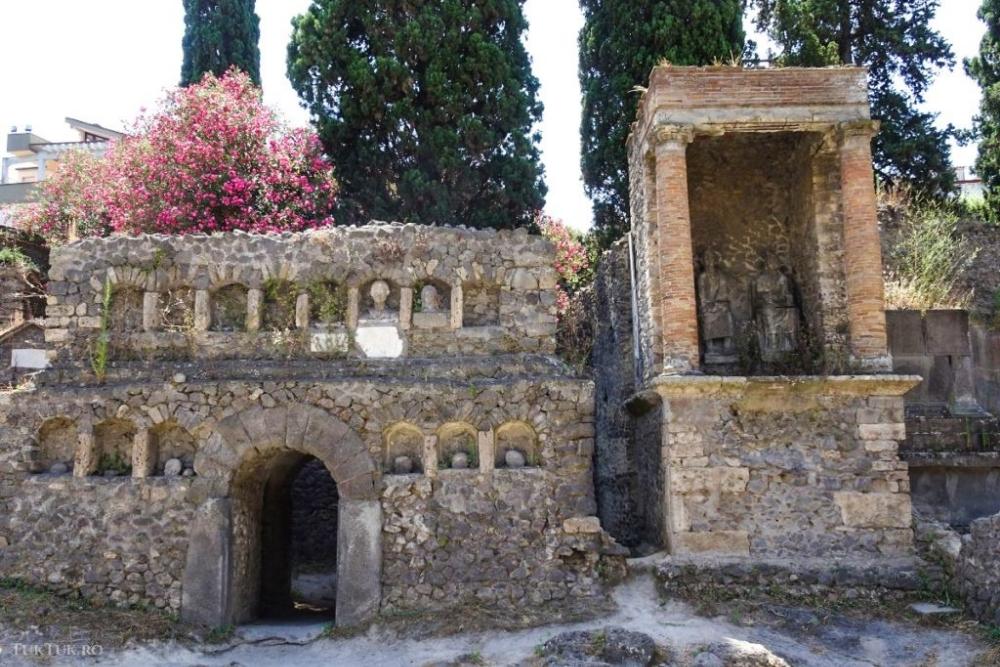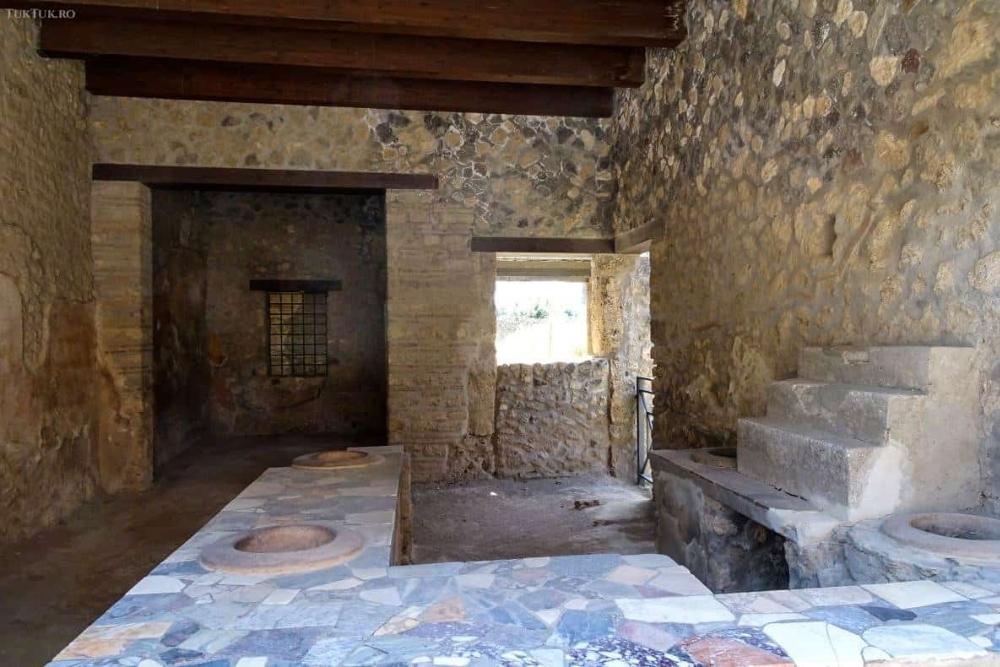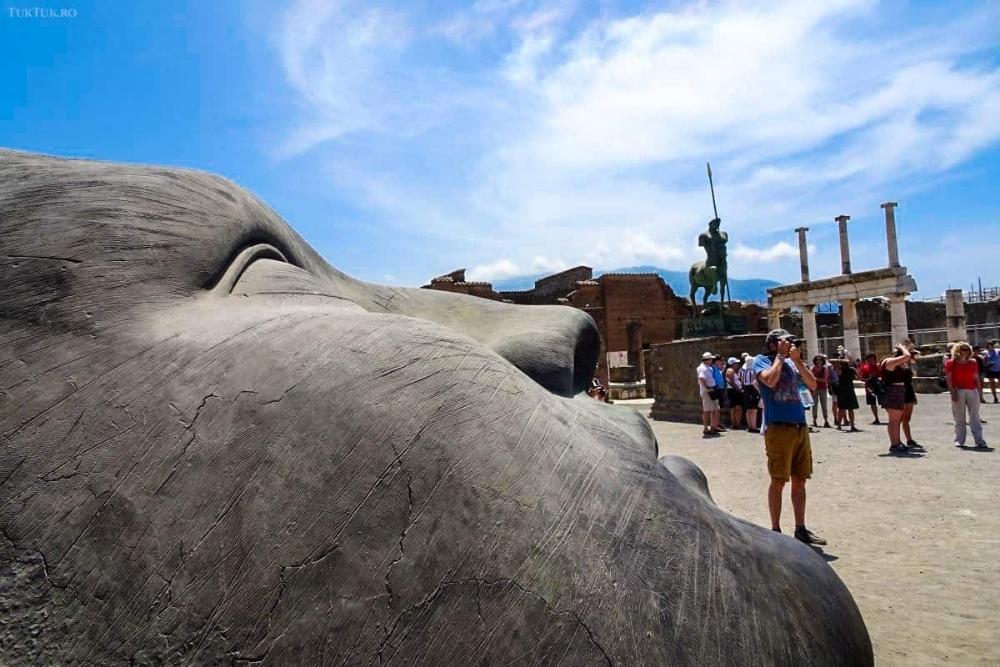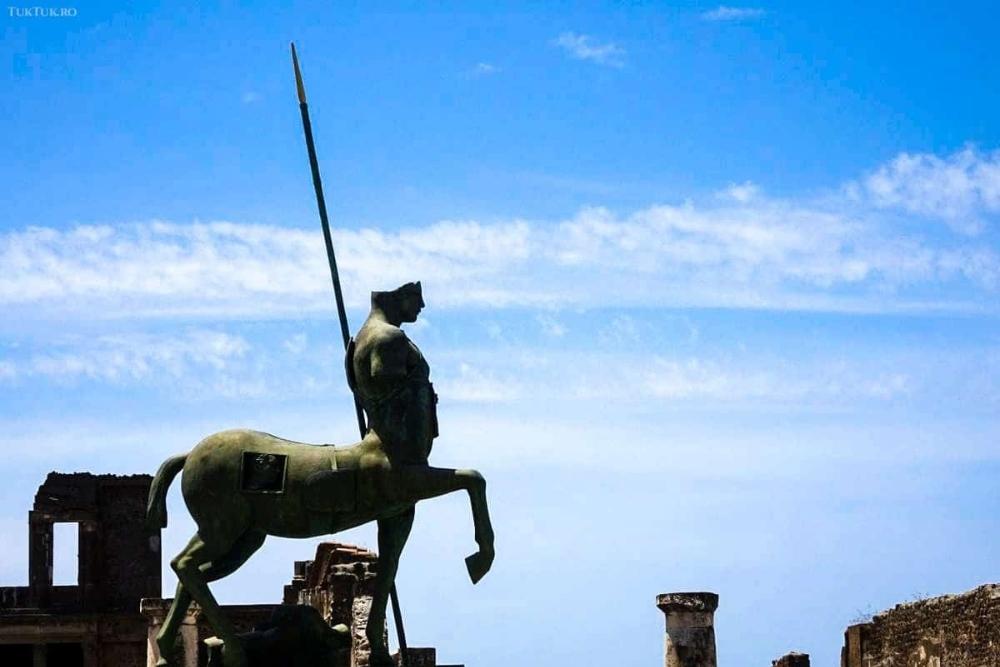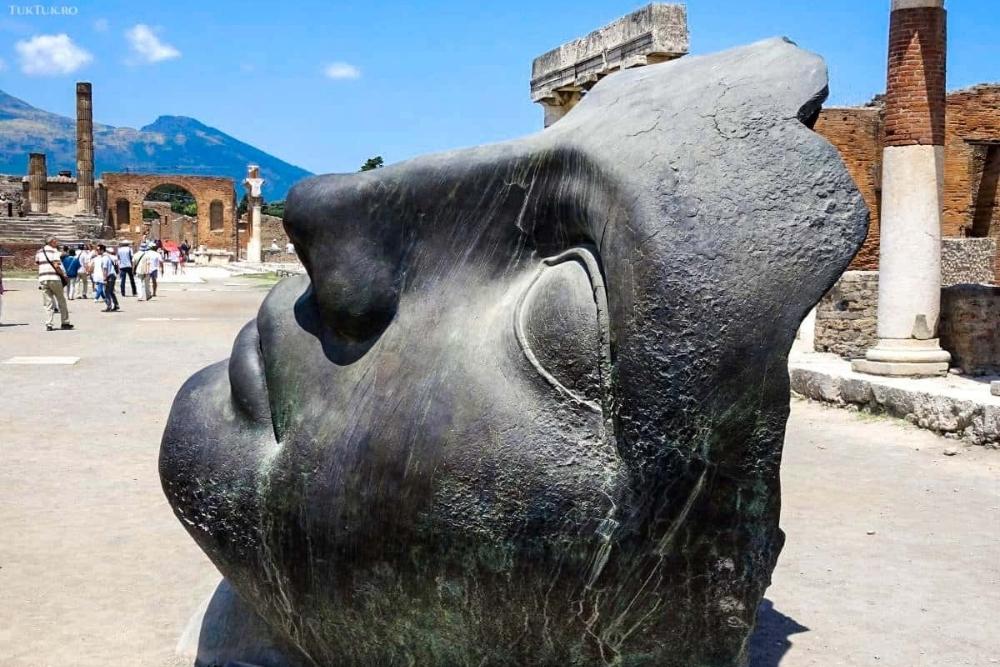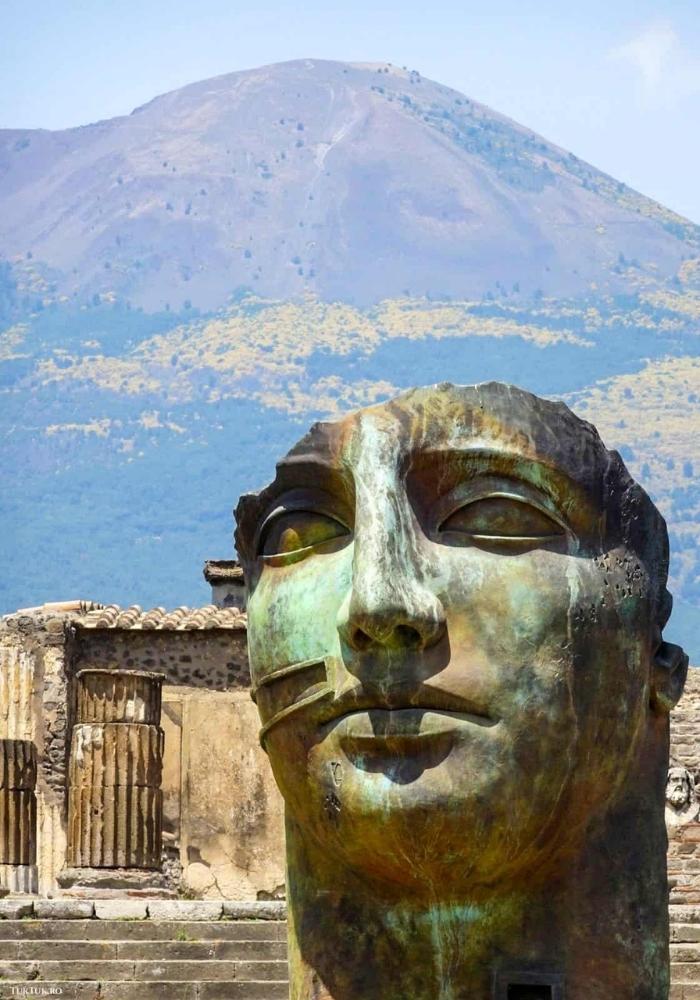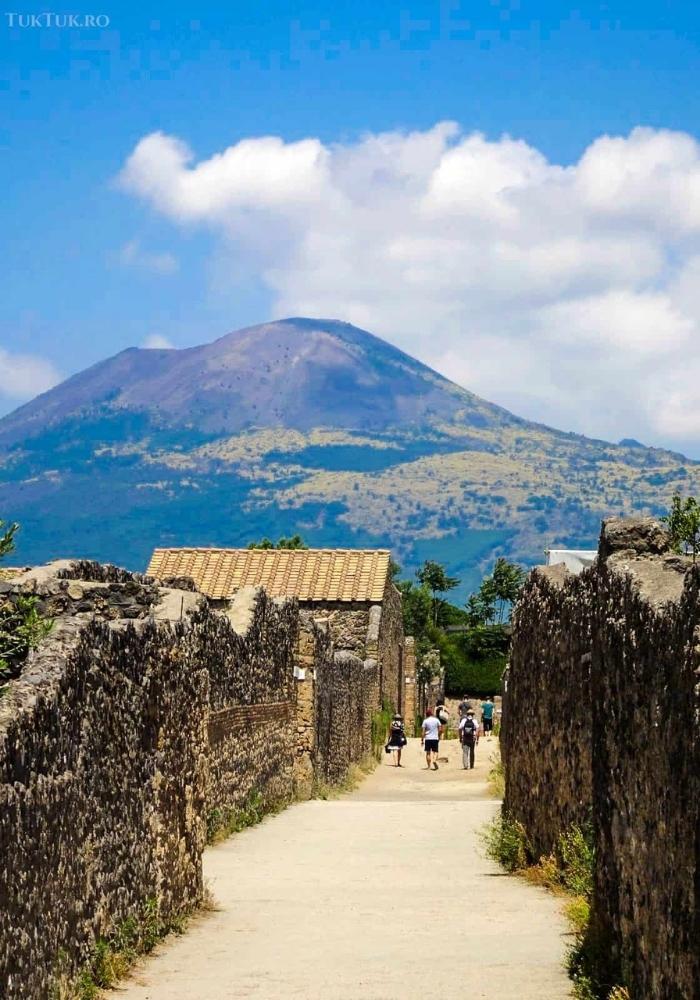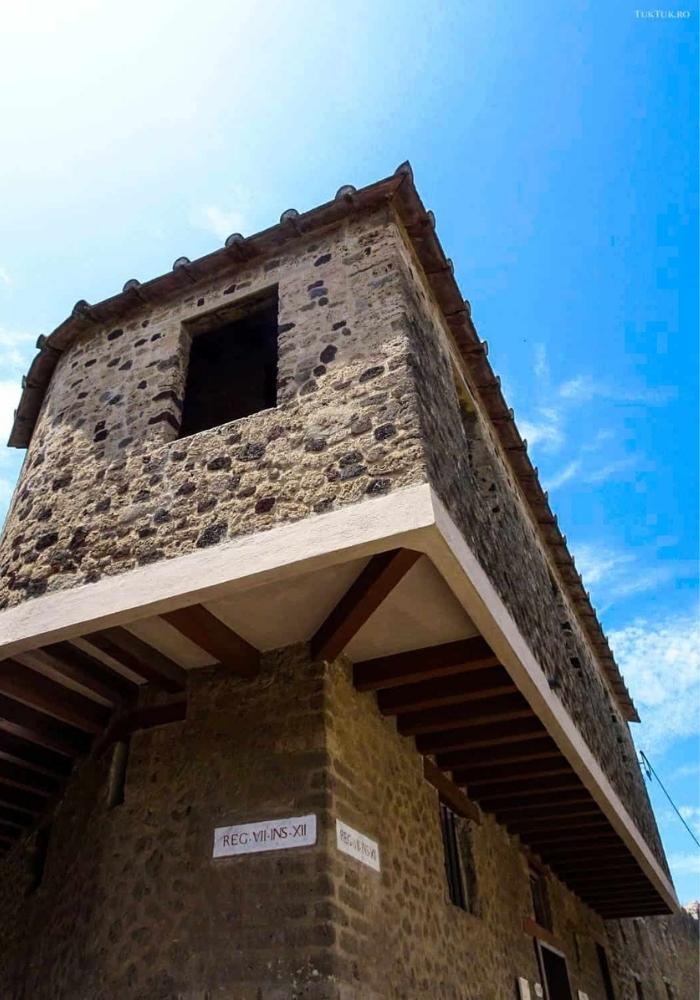A visit to Pompeii is an excursion back to history. It’s almost mandatory when you’re in Naples or on your way to the Amalfi Coast or Sorrento. And it’s not that you’re going to see a bunch of rocks, as many people say, for which ruins mean nothing. Pompeii was a prosperous city, destroyed after the terrible eruption of the Vesuvius volcano in 79 AD. A town that went under the domination of Rome in 80 BC, when it became a colony of the empire’s capital after taking part in a rebellion against the Republic. When Vesuvius sent his fury on it, the city had about 11,000 souls buried under the lava and ash layers that had been sedimented for centuries until 1599, when Pompeii was discovered. Then rediscovered in 1748 by the Spanish engineer Rocque Joaquin de Alcubierre.
How to visit Pompeii
Why should you visit Pompeii? First of all, because the titanic archeological work has revealed an extremely well-preserved city. Here you breathe history, walking through the cobblestone streets, watching the houses of the inhabitants, entering the Amphitheater, the gymnasium, or the brothel, passing through the villas of the nobility, through the homes of the middle class or through the modest houses of the poor. Pompeii is an amazing city, and not even the tormenting heat of the July sun can change that impression. Let’s see how to visit Pompeii, from my experience.
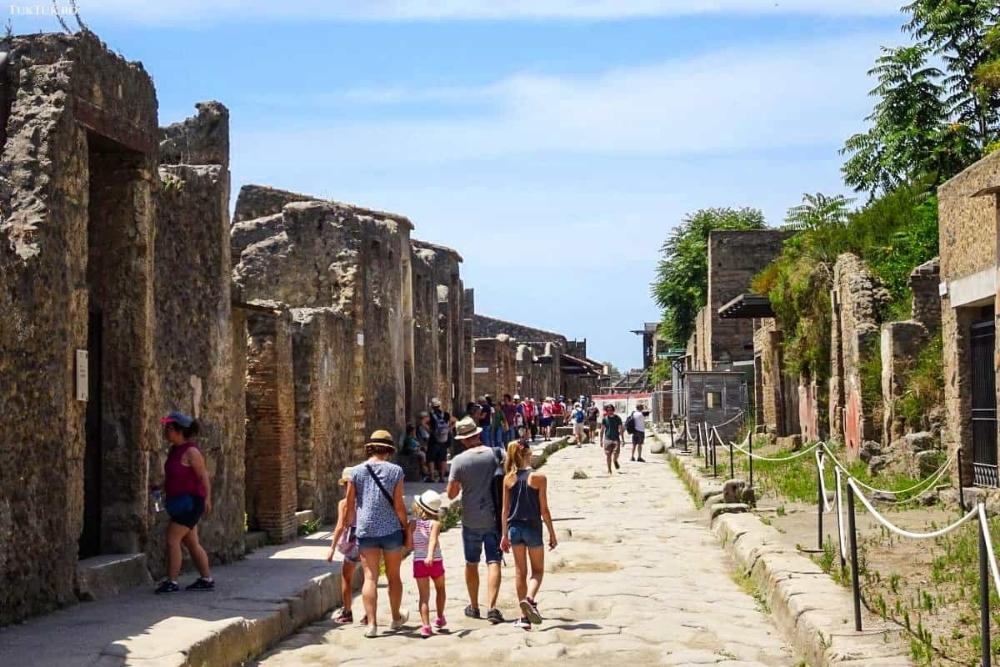
It is not advisable to go to Pompeii on such heat (as I was), but, after all, that is not important. The site is only 27 km from Naples (on the A3 motorway) and another 27 km from Sorrento, practically halfway between them. So if you land in Naples and head for the Sorrento Coast or Amalfi, stop on your way for an average visit that will take about three hours. If you have a rented car (or your personal one), you can leave it in one of the guarded parking lots, with payment, near the entrances. Pompeii has seven gates, but in the area of ruins, one can only enter Piazza Anfiteatro (the one where I actually use, passing the Amphitheater where Pink Floyd performed the famous concert in 1972, repeated in 2016 by David Gilmour, only one day before I get to the scene).
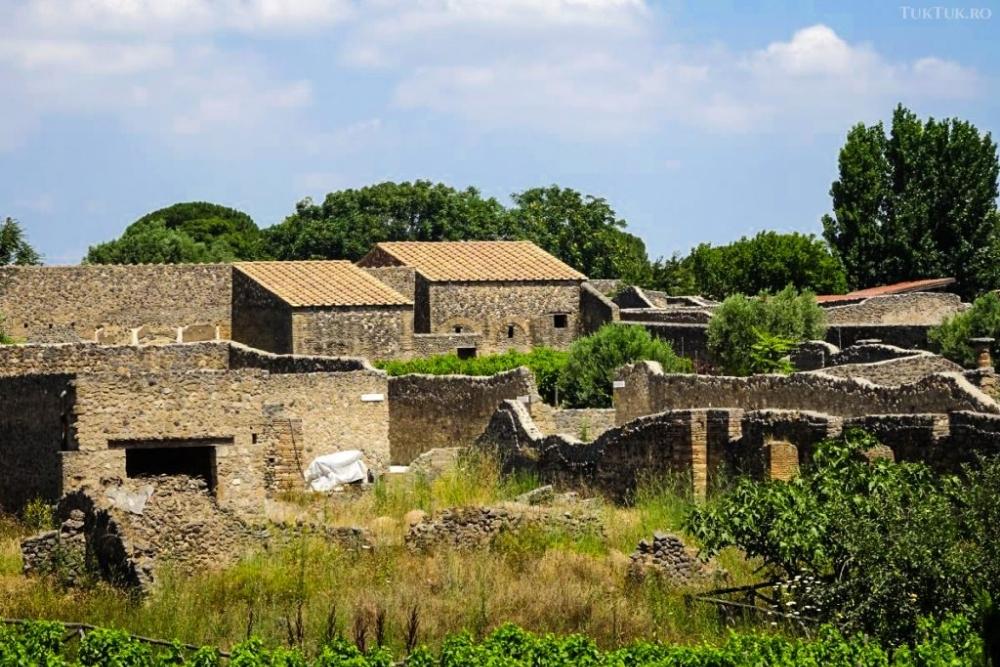
You must know that there are five archeological sites in the area, besides Pompeii, the most important being Herculaneum (which some consider, apparently, even more interesting than Pompeii), also Oplontis, Stabiae and Boscoreale. You can buy various types of tickets, combinations of them or individual tickets for each. I’ve only been to Pompeii, and you will read only about it here, but if you have time and feel like exploring, it’s worth seeing them all. The sites do not include Vesuvius, a tourist attraction in itself. You can visit individually or buy a one-day tour of the railway stations from Pompeii or Herculaneum.
Usually, there are some queues at the entrance (especially in the morning), but if you want to not stay, buy your ticket online, print it, and you will accede immediately. For a day at Pompeii, the entrance ticket costs 13 euros. Children have free access (but if you achieve tickets online, “buy” for them the zero value, so you can enter). For Herculaneum, you will pay 11 euros, and for all five sites (three consecutive days), 22 euros. But it’s best to check the official website, maybe meanwhile the prices changed.
The visiting program in the high season (April 1 – October 31) is from 8.30 to 21.30 (the last entry to 19.30) and in the low season, from 8.30 to 18.30 (the last entry to 17.00).
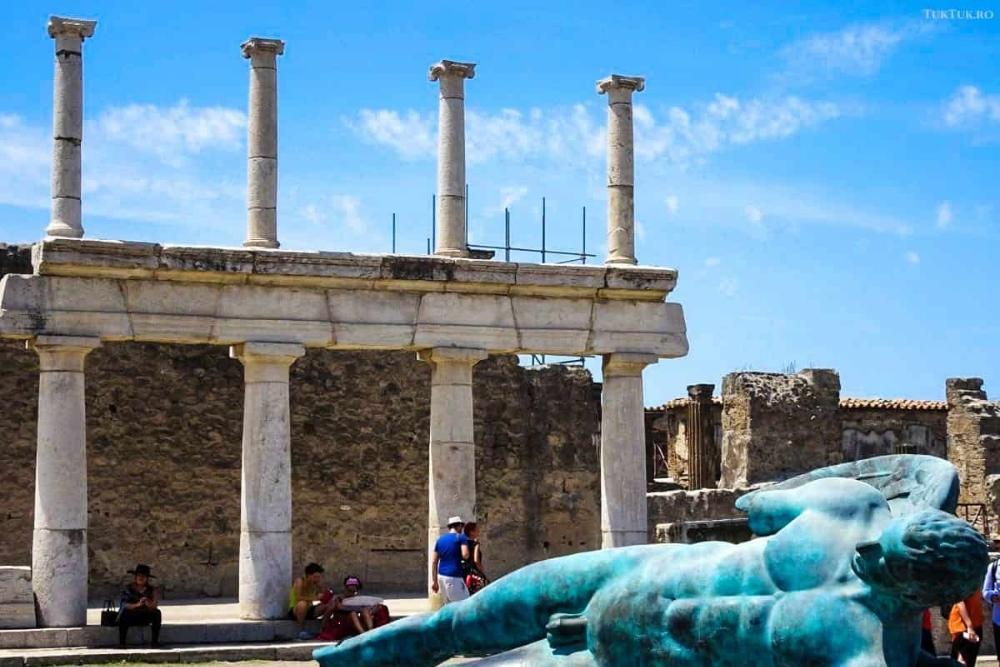
If you visit the city individually, the most important thing is to have a map. You can find it at the ticket stalls or at the street vendors. With its help, you’ll do a lot easier than if you randomly stroll to the ancient streets. Also, you can hire a guide — you find them around the ticket offices, and as I found out, some of them are better, some of them are less good — it’s all about luck, but the most important thing is that you first understand what they’ll tell you. Another way is to get an audio guide if you like to sit with headphones in your ears.
There is a lot to see in Pompeii, and you will not be able to encompass the entire city, which has about three kilometers and which has – like any city – interesting and dull areas. All in all, however, we recommend not to leave without seeing the following objectives: the Amphitheater, the Forum, the temples of Jupiter and Apollo, the House of Faun, the home of the tragic poet, the villa of mysteries, the bakery, and the brothel.
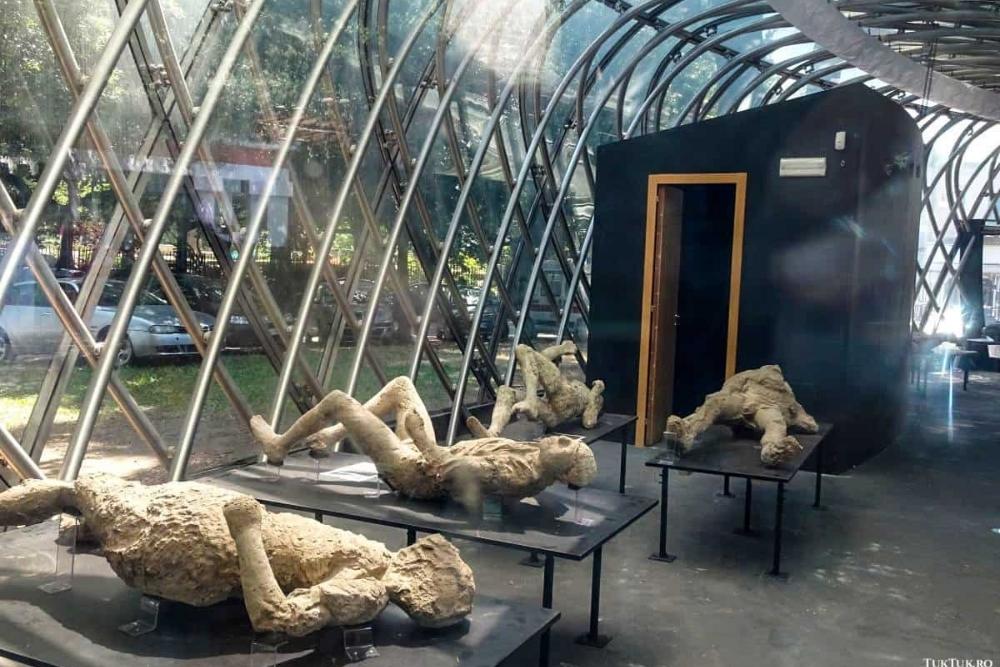
You will notice that on the walls of some of the houses remained inscriptions of electoral propaganda or small jokes dedicated to the citizens of the city. The signs on the doors of some former stores indicate the type of activity carried out here and the owner’s name. Among the villas of the nobility – some of the extravagant beauty, with beautiful gardens, miniature statues, and unique views – the houses of the poor were built, where several families lived together or the middle-class homes. Paintings, household items, furniture, ornaments, tools, terracotta lamps – all are present in various places, amazing discoveries made from excavations. There are signs and clues about all the things that were happening here and, if you saw the movie Pompeii (2014) you can easily imagine, as you stroll the streets of the city, how life was in this prosperous city, suddenly hit by the plague coming out of the center of the Earth. And, last but not least, you will see the freaky bodies wrapped in lava and ash of some unfortunate inhabitants of Pompei, surprised in various positions by the devastating leaks.
Interesting things about Pompeii:
*** The inhabitants of Pompei had no idea that Vesuvius was a volcano and could erupt because this had not happened in 1800 years.
*** Before the eruption in 79, there was no word for “volcano”. This was created after the blast and derived from “Volcano” – the Roman god of flames name.
*** The ruins of Pompeii are visited by more than 2.6 million tourists annually.
*** It is said that if the eruption had taken place on any other day, the inhabitants of Pompeii would have had a great chance to escape. Because, usually the wind was blowing southwest, which would have led the ashes to the Gulf of Naples. But on that cursed day, it changed direction to the northwest, which was right above the city.
*** With its 60.7 hectares, Pompeii is the largest excavated area in the world and the largest archeological site.
*** Before the eruption, Pompeii was the favorite place of the high-placed Romans who came to spend their holidays here. It is said that Emperor Nero himself had a holiday villa near Pompeii.
You may also like: What to do in Naples for free or on a budget

